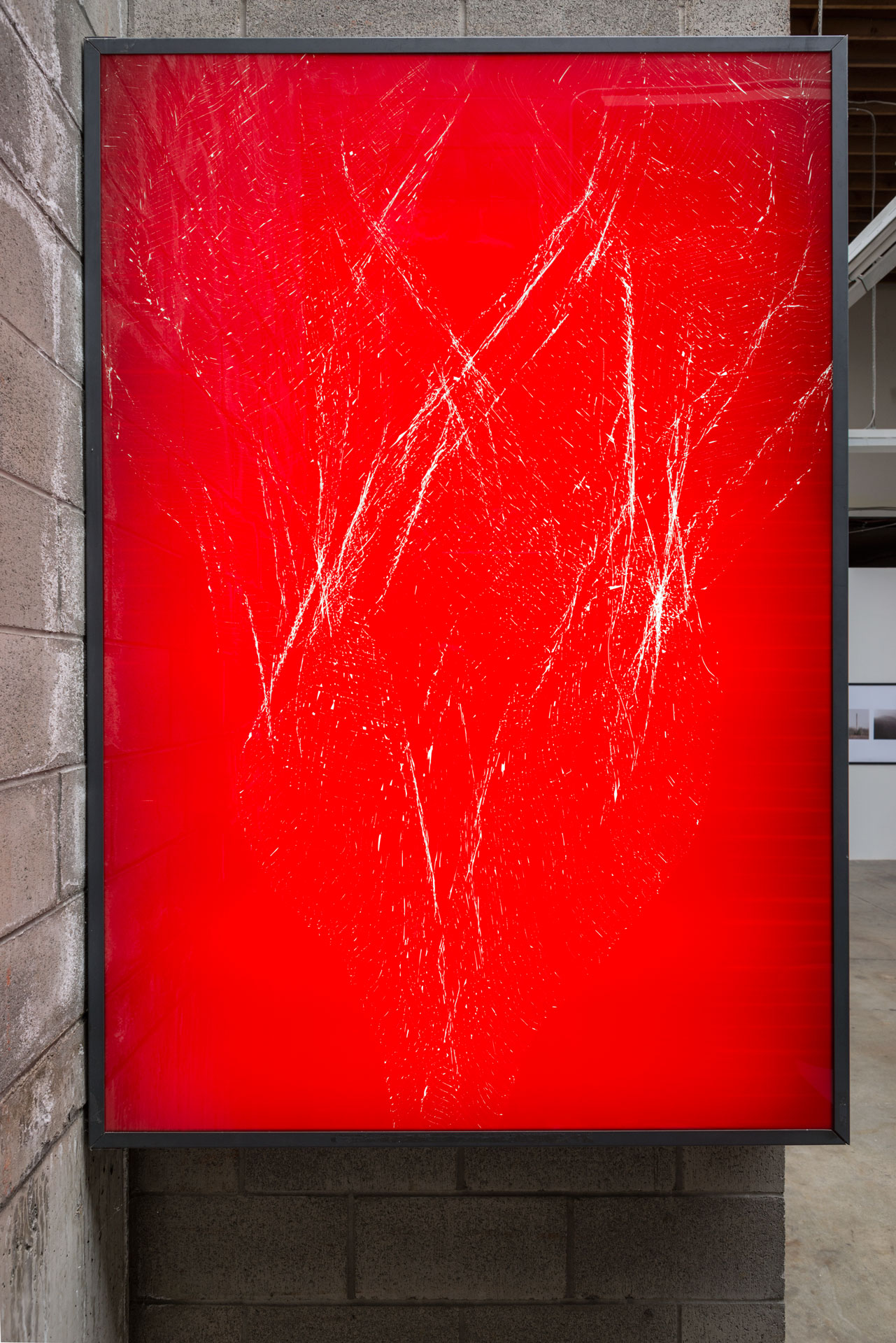Cut Ruby (Series 2)
Joseph Staples
GALLERY 295
January 8 – April 2, 2016
Joseph Staples takes over Gallery 295’s Light Box Project Space with a scaled work that takes manoeuvres through the politics of collage emerging from the act of cutting a relief. Staples employs the cut towards a monochromatic red and reveals the white backlight surface of the lightbox between intimate lines and voids peeled away during the repetitive stencilling process. Traditionally Rubylith is a material associated with the production of a photographic relief within print making practices. The material blocks UV light, creating a negative for ink to pass through, most often used for blocking large areas of an image in the photographic exposure of stencils.
Working with a clean Rubylith coated surface, the gesture of Staples cut are deepened in the repetition of line and the instances of white, which are themselves an outline of a figure sourced from pornographic imagery, the appropriation of which is a direct homage to collage and its political history. In using Rubylith as opposed to plaster or scratching paint off glass, Staples’ iteration into the Light Box Project Space addresses the bleed of photographic reproduction towards mechanization of the image. He accesses photography’s historical relationship with the dissemination of knowledge and entertainment towards that of digital information systems, and the pornographic image emerges at every instance. Recognizing this, Staples offers up this system through a non-mechanical mode of the gesture in the cut, and as images today are themselves impermanently collaged into the cloud as code between networked servers, the reproductive model is less reliant on the Rubylith material as it is on the illuminated surface of screens and network systems.
In the act of the cut, Staples repurposes the pornographic figure as a light-safe material and points, however discretely, to the use red lighting to eliminate flaws in complexion and heighten the aesthetic fantasy of private rooms within red light districts and strip clubs. He offers up crude instances of lines and void reliefs where the repetitive figure merges as a synthesis of line and form, and the relationship between photographic materials, their history, and their evolution of content is further abstracted. Red in this instance is the colour of sex and mass reproduction.
Exhibition text by Patryk Stasieczek, co-curated with Mike Love.
